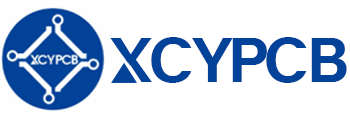26
2025
-
06
Unlocking Innovation: The Wonders ofMultilayer Boards
Author:
Introduction toMultilayer Boards
Imagine a world where every electronic device you use is powered by the clever engineering of multilayer boards. These unsung heroes of technology play a pivotal role in making our devices more compact, efficient, and reliable. So, what exactly is a multilayer board, and why should you care? Let’s dive in!
What is aMultilayer Board?
At its core, a multilayer board (or PCB) is a type of printed circuit board that consists of three or more layers of conductive material. This design allows for the efficient routing of electrical signals, making them indispensable in modern electronic devices. Think of them as the highways of electronic circuits, where data zooms from one point to another without a hitch!
Benefits of UsingMultilayer Boards
Now, you might be wondering, “What’s the big deal about multilayer boards?” Well, let’s break it down:
- Space-saving: With their multiple layers, these boards can pack a punch in a small footprint. This is crucial for smartphones and tablets, where every millimeter counts!
- Enhanced Performance: More layers mean better signal integrity and reduced electromagnetic interference. In simpler terms, they help your devices run smoother and faster.
- Cost-effective: While the initial manufacturing costs might be a tad higher, the long-term benefits, such as reduced assembly costs and fewer failures, make them a smart investment.
Applications Galore!
From consumer electronics to automotive systems, multilayer boards are everywhere! Here are some of the key areas where they shine:
- Consumer Electronics: Think smartphones, laptops, and gaming consoles. Multilayer boards are the backbone of these devices, ensuring they’re compact and efficient.
- Medical Equipment: In the healthcare sector, reliability is paramount. Multilayer boards help power critical devices like MRI machines and patient monitors.
- Telecommunications: Ever wondered how your calls and internet work seamlessly? Multilayer boards are integral to routers, switches, and base stations.
Challenges inMultilayer Board Manufacturing
Although multilayer boards are remarkable, manufacturing them isn’t a walk in the park. It requires precision, specialized equipment, and a keen understanding of materials. A misstep can lead to costly errors!
Also, the design process is intricate. Engineers must ensure that each layer is crafted to perfection, considering factors like thermal management and electrical performance. But don’t sweat it—advancements in technology are making this process smoother than ever!
The Future ofMultilayer Boards
As technology continues to evolve, so do multilayer boards. Innovations like flexible and rigid-flex designs are on the rise, allowing for even more creative applications. Imagine bending your smartphone without fear of breaking it—thanks to multilayer boards!
Moreover, the push for sustainability is leading manufacturers to explore eco-friendly materials. The future looks bright for multilayer boards, and they’re set to play a crucial role in the next wave of tech advancements.
Conclusion
To sum it up, multilayer boards are the backbone of modern electronics, providing the perfect blend of performance and efficiency. Whether you’re a tech enthusiast or a casual user, understanding these marvels can deepen your appreciation for the devices you use every day. So, next time you pick up your smartphone, remember the multilayer board that makes it all possible—what a ride!
Contact Information
Address: 318 Nanshan Road, Jianghai District, Jiangmen City, Guangdong Province
Welcome to contact me

Mr. Fang

Miss Li
Message
